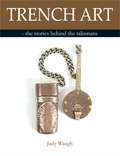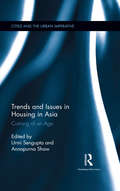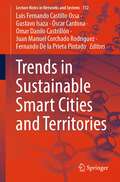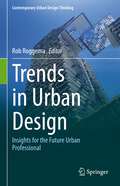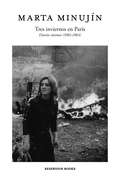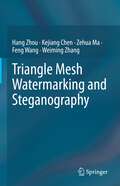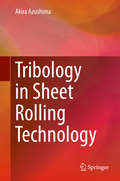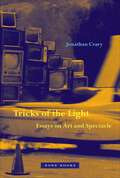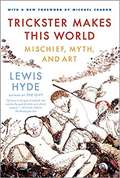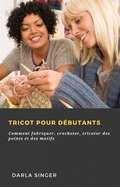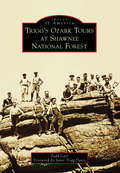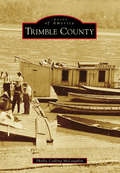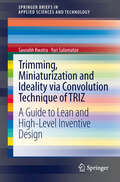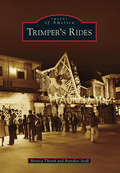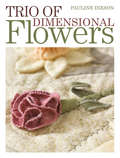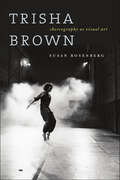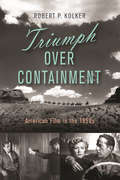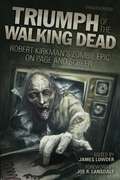- Table View
- List View
Trench Art: the stories behind the talismans
by Judy WaughThis unique collection of trench art evokes emotion. Each piece was created in turmoil but all are beautiful - intuitive works of art about music, faith, love and honour. 56 pieces are from WWI. All are signed with name and service number. Most are small and tactile, often worn as a fob. Many are made from coins and brass from the battlefield; some are carved in bone and wood. Most belonged to young soldiers who were killed in action or died of their wounds - at Gallipoli, France and Flanders, Palestine and Mesopotamia. Twelve belonged to Anzacs. This book tells their stories - of men from England, Scotland, Wales, Australia and New Zealand, bound by adventure and loyalty to their common ancestry. . . . . . The engraved ID holds the key to the story. The heart of each story is different. There are stories of courage under fire and desertions at Colombo; of death from sunstroke and survival through three theatres of war; of medals awarded and fines for misadventures; of men from the Outback in Queensland and young lads from Boys Homes in Kent. There are insights into social history - the ostracism and disgrace of venereal disease, the generational poverty in industrial cities, the imperative to secure oil lines in Iraq. And there are heartbroken letters from those left behind. . . . . . This book will appeal to collectors of artefacts, coins and militaria. It will also appeal to those interested in family history, social history, military history and art therapy in trauma. So much can be found from so little. The range of artefacts may also interest researchers. There are over 64 artefacts in all, including two from the Boer War, one from Crimea, and seven from the convict era - all bearing testament to the primal need to carve a name.
Trends and Applications in Knowledge Discovery and Data Mining: PAKDD 2019 Workshops, BDM, DLKT, LDRC, PAISI, WeL, Macau, China, April 14–17, 2019, Revised Selected Papers (Lecture Notes in Computer Science #11607)
by Leong Hou U. Hady W. LauwThis book constitutes the thoroughly refereed post-workshop proceedings of the workshops that were held in conjunction with the 23rd Pacific-Asia Conference on Knowledge Discovery and Data Mining, PAKDD 2019, in Macau, China, in April 2019.The 31 revised papers presented were carefully reviewed and selected from a total of 52 submissions. They stem from the following workshops: · PAISI 2019: 14th Pacific Asia Workshop on Intelligence and Security Informatics · WeL 2019: PAKDD 2019 Workshop on Weakly Supervised Learning: Progress and Future · LDRC 2019: PAKDD 2019 Workshop on Learning Data Representation for Clustering· BDM 2019: 8th Workshop on Biologically-inspired Techniques for Knowledge Discovery and Data Mining · DLKT 2019: 1st Pacific Asia Workshop on Deep Learning for Knowledge Transfer
Trends and Issues in Housing in Asia: Coming of an Age (Cities and the Urban Imperative)
by Annapurna Shaw Urmi SenguptaThis book offers a comprehensive overview of current housing practices across Asian cities based on facts and trends in the market. For many countries in Asia, the future of housing is now. This future is closely linked to successful theoretical advancement and policy practice in housing studies. This volume brings together twelve chapters divided across four thematic parts that sum up the concept and conditionality of housing in Asian cities. It studies housing through conceptual perspectives and empirical studies to explore established notions, cultures and practices relevant to the 21st-century post-reform context in Asia. Housing and property have long been economic drivers, leading many individual households towards better lives and associated social and community benefits, while also collectively improving the economic base of a city or country. This book examines the nature of the interplay of both state and market in the housing outcomes of these cities. With its extensive geographic coverage across South East Asia, South Asia, and the Far East and a cross section of different income groups, the book will interest reseachers and scholars in urban studies, architecture, development studies, public policy, political studies, sociology, policymakers in local and central governments, housing and planning professionals and commercial firms engaged in property markets or real estate in Asia. It will also provide ideas, tools and good practices for institutional enablement, stakeholders involved in these interventions, private sector organisations and NGOs.
Trends in Sustainable Smart Cities and Territories (Lecture Notes in Networks and Systems #732)
by Juan Manuel Corchado Rodriguez Gustavo Isaza Luis Fernando Castillo Ossa Óscar Cardona Omar Danilo Castrillón Fernando De la Prieta PintadoThis book presents the latest scientific and technical advances in the fields of Smart Cities and Smart Territories. It shows outcomes of 2nd Sustainable Smart Cities and Territories International Conference in Manizales (Colombia) on June 21–23, 2023. The concept of smart cities, which emerged in the early 2000s, attempts to solve these challenges by implementing information and communication technologies. The initial concept of smart cities focused on the modernization of megacities.
Trends in Urban Design: Insights for the Future Urban Professional (Contemporary Urban Design Thinking)
by Rob RoggemaUrban planning practice will undergo significant changes in the upcoming decades, due to major changes and challenges the world has to deal with, such as loss of biodiversity loss, climate change impacts, agricultural transformation, water management issues and health. The way the urban professional has to relate to this new order is explored in this book by collecting a series of conversational chapters with local, regional, national and international experts in the fields of urban planning and design, urban and building development, building and construction industry, architecture, governments and academia. The unification of a desirable future with real world processes such as economic and decision-making practice is key. Moreover, the attitude of the future urban professional will more and more shift from an expert in a specific field to a communicative advisor in complex processes.
Tres inviernos en París: Diarios íntimos (1961-1964)
by Marta MinujínEstos diarios muestran los inicios de la artista contemporánea más reconocida de la Argentina. Comienzan cuando cumple 18 años, en 1961, y decide probar suerte en París. Y finalizan cuando regresa a la Argentina en 1963, consagrada como una de las grandes promesas de su generación. "Me siento como Alicia en el País de las Maravillas", escribe Marta Minujín en su diario cuando aterriza en París, el 5 de noviembre de 1961, a los 18 años. La capital francesa, en plena ebullición cultural, promete oportunidades que la gris Buenos Aires no ofrece. Tras casarse en secreto con Bebe, su gran amor, Marta Minujín llega sola a Francia con una beca para estudiar. En cambio, se pasa los días creando, y por las noches deambula en bares como Le Dôme y La Coupole, en Montparnasse, donde conoce a toda la bohemia europea. La ciudad será testigo de su primer happening, La destrucción, y de la concepción de obras como La chambre d'amour. En este diario, recientemente descubierto, Minujín recoge las primeras impresiones de París, de los barrios, de la gente. Por sus páginas desfilan personajes como Luis Felipe Noé, Alberto Greco, Alejandra Pizarnik y Julio Cortázar. También retrata la angustia frente a la soledad, las constantes dudas sobre la relación con su marido -que la visita en París y le pide que se vuelva a la Argentina-, el frío del invierno, la mudanza de atelier en atelier (sin calefacción y a veces sin lugar donde bañarse), el trasfondo social de la guerra con Argelia, y la lucha por hacerse un nombre en el mundo del arte internacional. Tres inviernos en París dibuja a Marta Minujín con una luz asombrosamente real y humana, a la vez que presenta un testimonio maravilloso no sólo de su vida y su carrera, sino de toda una generación que, en los sesenta, revolucionó las normas sociales y estableció una contracultura. «Siento que algún día daré algo como lo que pocos seres dan, siento una voz interior que dice que tengo que seguir de cualquier forma, tratando de crear algo que trascienda el tiempo, porque es mi destino.»Marta Minujín, diciembre de 1961
Triaging the Streaming Wars (Electronic Media Research Series)
by Robert Alan Brookey Jason Phillips Timothy PollardThis volume considers the different implications of the rise of streaming services and their particular acceleration during the COVID-19 pandemic. Exploring the significant disruption caused to the entertainment industries by the rise of these streaming services, a team of international scholars examine changes to labor issues and compensation, which were central to the conflict between the Writers Guild of America members and their agents, the broadening divide between networks and affiliates, the significant consolidation of the media industry resulting from Disney’s acquisition of Fox ahead of the launch of Disney+, and the variety of business models behind these services that defy the traditional advertising models and standard revenue streams. This thorough and multifaceted look at this rapidly growing section of the entertainment industry will be of interest to academics and students working in film and TV studies, media industry studies, digital media studies, business, and communication studies.
Triaging the Streaming Wars (Electronic Media Research Series)
by Robert Alan Brookey Jason Phillips Timothy PollardThis volume considers the different implications of the rise of streaming services and their particular acceleration during the COVID-19 pandemic. Exploring the significant disruption caused to the entertainment industries by the rise of these streaming services, a team of international scholars examine changes to labor issues and compensation, which were central to the conflict between the Writers Guild of America members and their agents, the broadening divide between networks and affiliates, the significant consolidation of the media industry resulting from Disney’s acquisition of Fox ahead of the launch of Disney+, and the variety of business models behind these services that defy the traditional advertising models and standard revenue streams. This thorough and multifaceted look at this rapidly growing section of the entertainment industry will be of interest to academics and students working in film and TV studies, media industry studies, digital media studies, business, and communication studies.
Triangle Mesh Watermarking and Steganography
by Feng Wang Hang Zhou Kejiang Chen Zehua Ma Weiming ZhangThis book provides a systematic overview of watermarking and steganography methods for triangle meshes related to computer graphics and security. The significance of this research has been well recognized by the growing body of work on watermarking, steganography and steganalysis of 3D meshes. With the evolution of the CAD industry and real-world end-user applications such as virtual reality (VR) and 3D printing, 3D meshes have attracted world-wide attention. Besides, the flexible data structure of 3D geometry provides enough space to embed secret information, making it ideal for applications such as copyright protection and covert communication. Our goal of the book is to allow readers to systematically understand 3D mesh information hiding technology and its applications as a whole. The book outlines comprehensive techniques, including handcrafted and deep learning-based techniques, digital and physical techniques in the literature and provides standard evaluation metrics for triangle meshes. The up-to-date geometrical deep learning and 3D printing-related algorithms are also covered. Offering a rich blend of ideas and algorithms, the book is up-to-date and self-contained. It is an excellent reference resource for users who are seeking 3D mesh watermarking and steganography algorithms, as well as for graduate students and researchers wanting to grasp the frontiers of triangular mesh processing on data hiding.
Tribology in Sheet Rolling Technology
by Akira AzushimaThis book provides an in-depth description of the fundamental tribological aspects of cold and hot sheet rollings. The author describes new developments in the rolling processes, the rolling oils, the rolling rolls and the structural materials resulting from sheet rolling technology and their practical applications. The author includes comprehensive details on both friction and lubrication in rolling.
Tricking Power into Performing Acts of Love: How Tricksters Through History Have Changed the World
by Shepherd SiegelTricking Power into Performing Acts of Lovetells the history of tricksters who challenged the boundaries of doctrine to light the way to a more peaceful and playful society.
Tricks of the Light: Essays on Art and Spectacle
by Jonathan CraryEssays on media systems and contemporary art by a leading theorist of modern visual cultureTricks of the Light brings together essays by critic and art historian Jonathan Crary, internationally known for his groundbreaking and widely admired studies of modern Western visual culture. This collection features a compelling selection of Crary's responses to modern and contemporary art and to the transformations of twentieth-century media systems and urban/technological environments. These wide-ranging and provocative texts explore the work of painters, performance artists, writers, architects, and photographers, including Allan Kaprow, Eleanor Antin, Ed Ruscha, John Berger, Bridget Riley, J.G. Ballard, Rem Koolhaas, Gretchen Bender, Dennis Oppenheim, Paul Virilio, Robert Irwin, and Uta Barth. There are also reflections on filmmakers Fritz Lang, Stanley Kubrick, Jean-Luc-Godard, David Cronenberg, and others. The book is enhanced by several expansive essays on the unstable status of television, both amid its beginnings in the 1930s and then during its assimilation into new assemblages and networks in the 1980s and 90s. These assess its many-sided role in the reshaping of subjectivity, temporality, and the operation of power. Like all of Crary's work, his writing here is grounded in the acuteness of his engagement with perceptual artifacts of many kinds and in his nuanced reading of historical processes and their cultural reverberations.
Trickster Makes This World: Mischief, Myth and Art
by Lewis HydeIn Trickster Makes This World, Lewis Hyde brings to life the playful and disruptive side of human imagination as it is embodied in trickster mythology. He first visits the old stories―Hermes in Greece, Eshu in West Africa, Krishna in India, Coyote in North America, among others―and then holds them up against the lives and work of more recent creators: Picasso, Duchamp, Ginsberg, John Cage, and Frederick Douglass. Twelve years after its first publication, Trickster Makes This World―authoritative in its scholarship, loose-limbed in its style―has taken its place among the great works of modern cultural criticism. <p><p> This new edition includes an introduction by Michael Chabon.
Trickster Theatre: The Poetics of Freedom in Urban Africa (African Expressive Cultures)
by Jesse Weaver ShipleyTrickster Theatre traces the changing social significance of national theatre in Ghana from its rise as an idealistic state project from the time of independence to its reinvention in recent electronic, market-oriented genres. Jesse Weaver Shipley presents portraits of many key figures in Ghanaian theatre and examines how Akan trickster tales were adapted as the basis of a modern national theatre. This performance style tied Accra's evolving urban identity to rural origins and to Pan-African liberation politics. Contradictions emerge, however, when the ideal Ghanaian citizen is a mythic hustler who stands at the crossroads between personal desires and collective obligations. Shipley examines the interplay between on-stage action and off-stage events to show how trickster theatre shapes an evolving urban world.
Tricot pour débutants: comment fabriquer, crocheter, tricoter des points et des motifs
by Darla SingerAimez-vous le tricot ou souhaitez-vous apprendre comment? Apprenez à créer de beaux motifs en un rien de temps! Que vous soyez sur la route, à la maison ou ailleurs, vous pouvez tricoter pendant votre temps libre, où vous le souhaitez. - Créez des motifs en quelques heures seulement. - Apprenez à tricoter. - Apprenez les modèles de points. - Créez des chapeaux, des pulls, des chaussettes, des cadeaux, des articles pour votre maison et bien d'autres! >>> Commandez votre copie instantanément
Tricô Para Iniciantes: Como Tricotar, Fazer Crochê, Tricotar Pontos & Padrões
by Beatriz dos Santos Maranho Darla SingerVocê gosta de tricô ou gostaria de aprender a tricotar? Aprenda a criar belos padrões em pouco tempo! Quer esteja na estrada, em casa ou em qualquer outro lugar, pode tricotar no seu tempo livre, onde quiser. - Faça padrões em apenas algumas horas. - Aprenda a tricotar. - Aprenda padrões de pontos. - Crie chapéus, suéteres, meias, presentes, itens para a sua casa e muito mais!
Trigg's Ozark Tours at Shawnee National Forest (Images of America)
by Foreword By Davis Todd CarrToday’s Shawnee National Forest visitors would not recognize 1930s southern Illinois. Hills and hollows were void of trees, the rivers and creeks choked with eroded topsoil. The need for a national forest was so great that a small group of men from southeastern Illinois vowed to make it happen. Much of the responsibility for promotion fell on newspaper publisher L.O. Trigg. Beginning in 1931, the annual Trails, Tours, and Detours excursion demonstrated the great potential for outdoor recreation in the southernmost counties of Illinois. In large part due to Trigg’s Ozark Tours, the National Forest Commission approved the purchase units that would become the Shawnee National Forest. Herein is the story of the Trigg Ozark Tours from 1931 through 1949, the men who went, the places they visited, and the legacy that remains today.
Trimble County (Images of America)
by Phyllis Codling MclaughlinIn 1837, Trimble County became Kentucky's 86th county, created from portions of Gallatin, Henry, and Oldham Counties. It was named for Virginia native Robert Trimble, a Kentucky attorney and state legislator who was nominated to the US Supreme Court by Pres. John Quincy Adams in 1826. In 1838, an eastern portion of Trimble County was taken to create Carroll County; the two eventually became archrivals in high school sports. Bedford, the county seat, was founded in 1816, centrally located at the junction of US Highway 42, once the region's main thoroughfare before Interstate 71 was built, and US Highway 421. Milton, the only other incorporated city in the county, is linked to Madison, Indiana, by the Milton-Madison Bridge, the sole Ohio River crossing between the Markland Dam, 26 miles upriver in Gallatin County, and Louisville, 42 miles downriver. Traditionally rural, Trimble County is known for its peach and apple orchards, its roadside markets, and of course tobacco.
Trimming, Miniaturization and Ideality via Convolution Technique of TRIZ
by Saurabh Kwatra Yuri SalamatovThe book is a valuable research tool-kit for innovators, amateur & professionals alike. Additionally, College & University faculties on Engineering, who organize yearly workshops internationally will find hundreds of novel themes to choose from. Some teachers might just secretly buy this book to introduce out-of-box brain-teasers in classroom to add fizz to normal (at times boring) lecturing. The book can be used as main/add-on textbook towards following courses: (1) Master's degree programs on design innovation worldwide and (2) Senior undergraduate courses in industrial, engineering & product design.
Trimper's Rides
by Brandon Seidl Monica ThrashNo trip to Ocean City, Maryland, is complete without a visit to Trimper's Rides. The unforgettable bright lights, carousel music, and elated screams from riders on the Tidal Wave are cherished memories for generations who return to the park annually. The evolution and success of Trimper's Rides embodies the American dream. It began when an enterprising German immigrant named Daniel B. Trimper and his large family took a chance on a little-known seaside town. They built a top-notch family-entertainment experience that continues to delight visitors today. The Trimpers rebuilt after storms, endured wartime challenges, and experienced periods of rapid growth and prosperity. Trimper's Rides chronicles this journey with nostalgic images of past attractions and the people who made Trimper's Rides the destination for family fun.
Trio di Giada
by Maki StarfieldTrio di giada Le poetesse cinese Xiao Xiao, Dumu Luofei e la poetessa giapponese Maki Stafield hanno tenuto un trilogo su "Giada". Nel capitolo "Donna Giada", hanno mostrato una donna contemporanea, misteriosa e appassionata atteggiamento e pensiero. Nel capitolo "Giada Spirituale", hanno mostrato la preziosa giada di pietra, guarendo da sola, la loro vita e il modo di vivere. Le loro chiacchiere sembravano infinite ...
Trio of Dimensional Flowers
by Pauline InesonLearn how to make amazing three-dimensional flowers with machine quilting, patchwork and appliqué techniques.Detailed step-by-step artworks and gorgeous photography beautifully illustrate Pauline's innovative techniques, which are acompanied by full-size templates.Variations for each flower show how you can adapt the colours and designs to create your own unique versions.Includes examples of stunning quilt blocks incorporating the flower designs.
Trisha Brown: Choreography as Visual Art
by Susan RosenbergTrisha Brown re-shaped the landscape of modern dance with her game-changing and boundary-defying choreography and visual art. Art historian Susan Rosenberg draws on Brown's archives, as well as interviews with Brown and her colleagues, to track Brown's deliberate evolutionary trajectory through the first half of her decades-long career. Brown has created over 100 dances, six operas, one ballet, and a significant body of graphic works. This book discusses the formation of Brown's systemic artistic principles, and provides close readings of the works that Brown created for non-traditional and art world settings in relation to the first body of works she created for the proscenium stage. Highlighting the cognitive-kinesthetic complexity that defines the making, performing and watching of these dances, Rosenberg uncovers the importance of composer John Cage's ideas and methods to understand Brown's contributions. One of the most important and influential artists of our time, Brown was the first woman choreographer to receive the coveted MacArthur Foundation Fellowship "Genius Award."
Triumph Over Containment: American Film in the 1950s
by Robert P. KolkerThe long 1950s, which extend back to the early postwar period and forward into the early 1960s, were a period of “containment culture” in America, as the media worked to reinforce traditional family values and suspected communist sympathizers were blacklisted from the entertainment industry. Yet some brave filmmakers and actors still challenged the status quo to produce indelible and imaginative work that delivered uncomfortable truths to Cold War audiences. Triumph Over Containment offers an uncompromising look at some of the era’s greatest films and directors, from household names like Alfred Hitchcock and Stanley Kubrick to lesser-known iconoclasts like Samuel Fuller and Ida Lupino. Taking in everything from The Thing from Another World (1951) to Dr. Strangelove or: How I Learned to Stop Worrying and Love the Bomb (1964), acclaimed film scholar Robert P. Kolker scours a variety of different genres to find pockets of resistance to the repressive and oppressive norms of Cold War culture. He devotes special attention to two quintessential 1950s genres—the melodrama and the science fiction film—that might seem like polar opposites, but each offered pointed responses to containment culture. This book takes a fresh look at such directors as Nicholas Ray, John Ford, and Orson Welles, while giving readers a new appreciation for the depth and artistry of 1950s Hollywood films.
Triumph of The Walking Dead: Robert Kirkman's Zombie Epic on Page and Screen
by Jay BonansingaAll zombies are created equal. All zombie stories are not. From its humble beginnings as an indie comic book, The Walking Dead has become a pop culture juggernaut boasting New York Times–bestselling trade paperbacks, a hit television series, and enough fans to successfully take on any zombie uprising. Triumph of The Walking Dead explores the intriguing characters, stunning plot twists, and spectacular violence that make Robert Kirkman's epic the most famous work of the Zombie Renaissance. The Walking Dead novels' co-author Jay Bonansinga provides the inside story on translating the comics into prose; New York Times bestseller Jonathan Maberry takes on the notion of leadership (especially Rick Grimes') during the zombie apocalypse; Harvard professor Steven Schlozman dissects the disturbing role of science in the television series; and more. Triumph of The Walking Dead features a foreword by horror legend Joe R. Lansdale.
